Thursday, 21 December 2023
Life Positive Magazine All issues 2023
Why is tomorrow going to be the shortest day of the year in India?

This year, the December Solstice, also known as Winter Solstice, falls in India on December 22, 2023. For some regions, it falls on December 21. The first day of astronomical spring in the Northern Hemisphere, the Winter Solstice can fall anytime from December 20 to 21. In rare cases, the winter solstice can fall on December 23. The last time the Winter Solstice fell on December 23 was in 1903. Winter Solstice 2023 falls at around 8:57 am IST on December 22. Solstices occur twice a year. They mark the beginning of astronomical summer and winter. Solstices take place around June 21 and December 21.
The winter solstice will be observed in India on December 22 at 8:57 AM. The shortest day of the year will occur in the Northern Hemisphere during the day, with roughly 7 hours and 14 minutes of daylight. Then, on December 22, Earth’s axis will be designated as the one that is furthest from the sun. This indicates that compared to the summer solstice, the winter solstice’s day is 8 hours, 49 minutes shorter.
The word solstice is derived from the Latin word ‘solstitium’, which means ‘the Sun stands still’.
Here’s why the winter solstice brings the shortest day:
- Earth’s tilt: Our planet isn’t straight up and down as it orbits the Sun. It’s tilted at an angle of 23.5 degrees. This tilt means that different parts of Earth receive direct sunlight at different times of the year.
- December tilt: During December, the Northern Hemisphere is tilted furthest away from the Sun. This results in the sun staying below the horizon for a longer period, meaning fewer hours of daylight and making it the shortest day.
- Southern Hemisphere flip: While the Northern Hemisphere experiences winter solstice, the Southern Hemisphere enjoys the summer solstice, meaning their longest day.
What is Solstice?
The Earth receives different amount of sunlight depending on the region and the time of the year. The Earth’s tilt makes one half of the world receive sunlight while the other half stays dark. The Earth’s axis tilts at 23.5 degrees because of which, one half of the world receives more sunlight and, hence, has a longer day time while the other half has a longer night.
When the tilt of the Earth is the most extreme with respect to the sun, one hemisphere has its longest day while the other hemisphere has the longest night. This phenomenon happens twice a year and it is known as solstice.
Why does Solstice occur?
Solstice takes place because of the Earth’s tilt. The Earth’s tilt makes sure that we have four different seasons. The sun-facing hemisphere experiences summer — June to August in the Northern hemisphere and December to February in the Southern hemisphere. The hemisphere that is away from the sun experiences winter.
During summer solstice in the Northern hemisphere, parts of the Arctic Circle experience 24 hours of daylight while in the Antarctic region, which is in the Southern hemisphere, there is no sunlight at all. The opposite takes place during winter solstice. The Arctic Circle gets no sunlight while the Antarctic belt gets sunlight for 24 hours.
When does Solstice occur?
Solstices occur twice a year. They mark the beginning of astronomical summer and winter. Solstices take place around June 21 and December 21. They do not occur on the same day every year because the astronomical year is 365.25 days long and we consider 365 or 366 days. Because of this reason, solstices can shift.
Solstices have been known to people for many centuries. They have inspired religious traditions throughout the world and many monuments have been built to mark the event.
Important Questions Related to Exams
Q1. When is the Winter Solstice in India?
Ans. The Winter Solstice, falling on December 22, 2023, at 8:57 AM IST, marks the first day of astronomical winter in the Northern Hemisphere. For some regions, it may fall on December 21.
Q2. How Long is the Day during the Winter Solstice?
Ans. The Northern Hemisphere experiences roughly 7 hours and 14 minutes of daylight during the Winter Solstice, making it the shortest day of the year.
Q3. Why Does the Winter Solstice Bring the Shortest Day?
Ans. Earth’s tilt, at an angle of 23.5 degrees, is the key. In December, the Northern Hemisphere is tilted furthest away from the Sun, resulting in fewer daylight hours.
Q4. What Does “Solstice” Mean?
Ans. The term “solstice” is derived from the Latin word ‘solstitium,’ meaning ‘the Sun stands still.’
Q5. When Did the Winter Solstice Last Fall on December 23?
Ans. The Winter Solstice last fell on December 23 in 1903. It usually occurs around December 21 but can vary between December 20 and 21.
Tuesday, 19 December 2023
JN.1 Variant of COVID-19 Virus, All You Need to Know About It
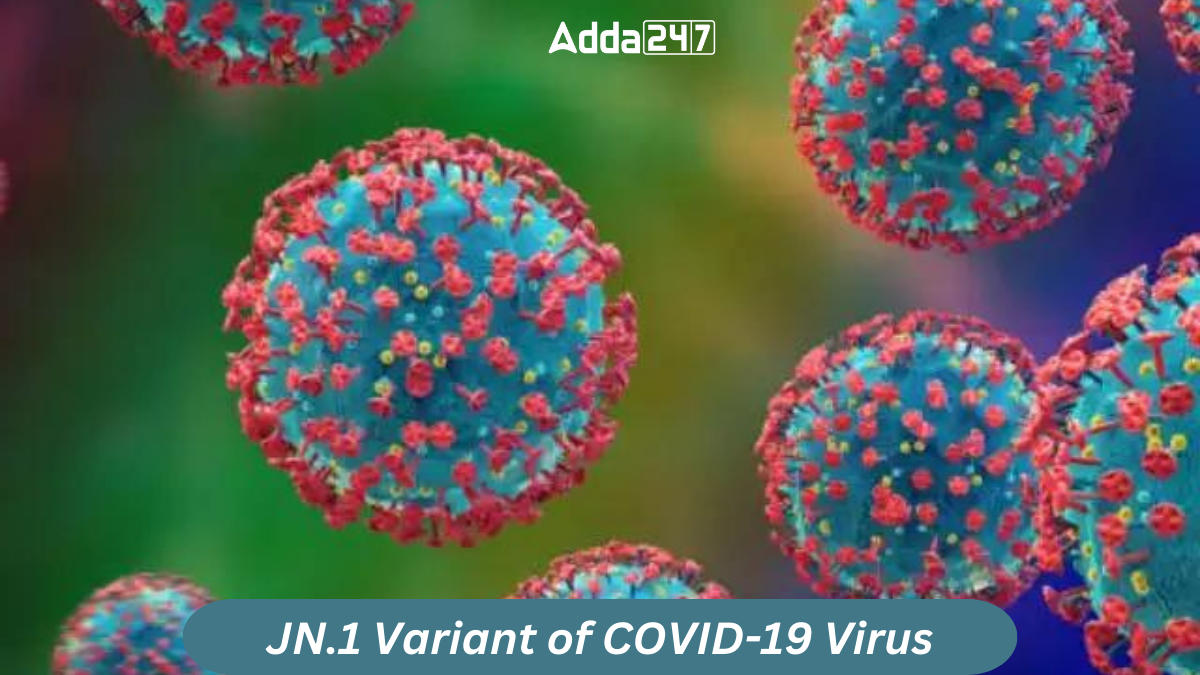
The World Health Organization (WHO) issued a warning on Sunday, December 17, expressing concerns over the evolving nature of the JN.1 COVID subvariant and the surge in respiratory diseases globally. The organization urged member states to prioritize sequence sharing and enhance surveillance efforts to better understand and combat the changing landscape of the virus.
The Evolution of JN.1 Subvariant
The JN.1 variant, identified as a subvariant of Omicron BA.2.86 or Pirola, was first detected in September 2023 in the United States. According to Rajeev Jayadevan, co-chairman of the National Indian Medical Association Covid Task Force, JN.1 has distinct characteristics, spreading faster and demonstrating the ability to evade immunity. This alarming combination makes it capable of infecting individuals with prior COVID infections and those who have been vaccinated.
Symptoms of JN.1
- Symptoms include fever, runny nose, sore throat, headache, cough and mild gastrointestinal issues.
- 1 is associated with mild symptoms, and there is no reported increase in hospitalizations.
- Patients typically recover within 4-5 days, with some experiencing breathing difficulties.
Response in India
In India, JN.1 was detected in Kerala on December 8, with a reported case in 79-year-old woman who experienced mild symptoms of Influenza like Illness (ILI). The country is urged to stay vigilant and implement necessary measures to contain the variant’s spread.
Preventive Measures of JN.1
Proactive preventive measures are crucial in curbing the spread of JN.1 Experts emphasize the following precautions:
- Regular hand sanitization remains a cornerstone in preventing the transmission of the virus.
- Wearing masks, especially high-quality masks, contributes significantly to reducing the spread of respiratory droplets.
- Maintaining a safe distance from others remains an effective measure in preventing the spread of the virus.
Vaccination Against JN.1 and Other Variants
Despite the challenges posed by the evolving JN.1 subvariant, Kerkhove reassured the public that COVID-19 vaccines continue to provide protection against severe disease and death, even with the circulating variants, including JN.1. She urged individuals to get vaccinated when it is their turn and to employ various tools to protect themselves from infection.
WHO’s Call for Continued Surveillance and Sequence Sharing
On Sunday, December 17, the WHO emphasized the need for member states to maintain vigilance through continuous sequence sharing and robust surveillance efforts. The organization is closely monitoring the situation and assessing the impact of the JN.1 subvariant on the global landscape of respiratory diseases.
Insights from WHO’s COVID-19 Technical Lead
Maria Van Kerkhove, the COVID-19 technical lead at WHO, shared a video on social media platform X, explaining the factors contributing to the recent surge in respiratory infections. Kerkhove highlights that the holiday season has led to increased gatherings, especially in regions entering winter months. Poor ventilation in indoor settings provides an ideal environment for the efficient spread of various pathogens, including COVID-19, influenza, rhinovirus and mycoplasma pneumonia.
Monday, 18 December 2023
PM Modi Unveils Varanasi’s Swarved Mahamandir, World’s Largest Meditation Center
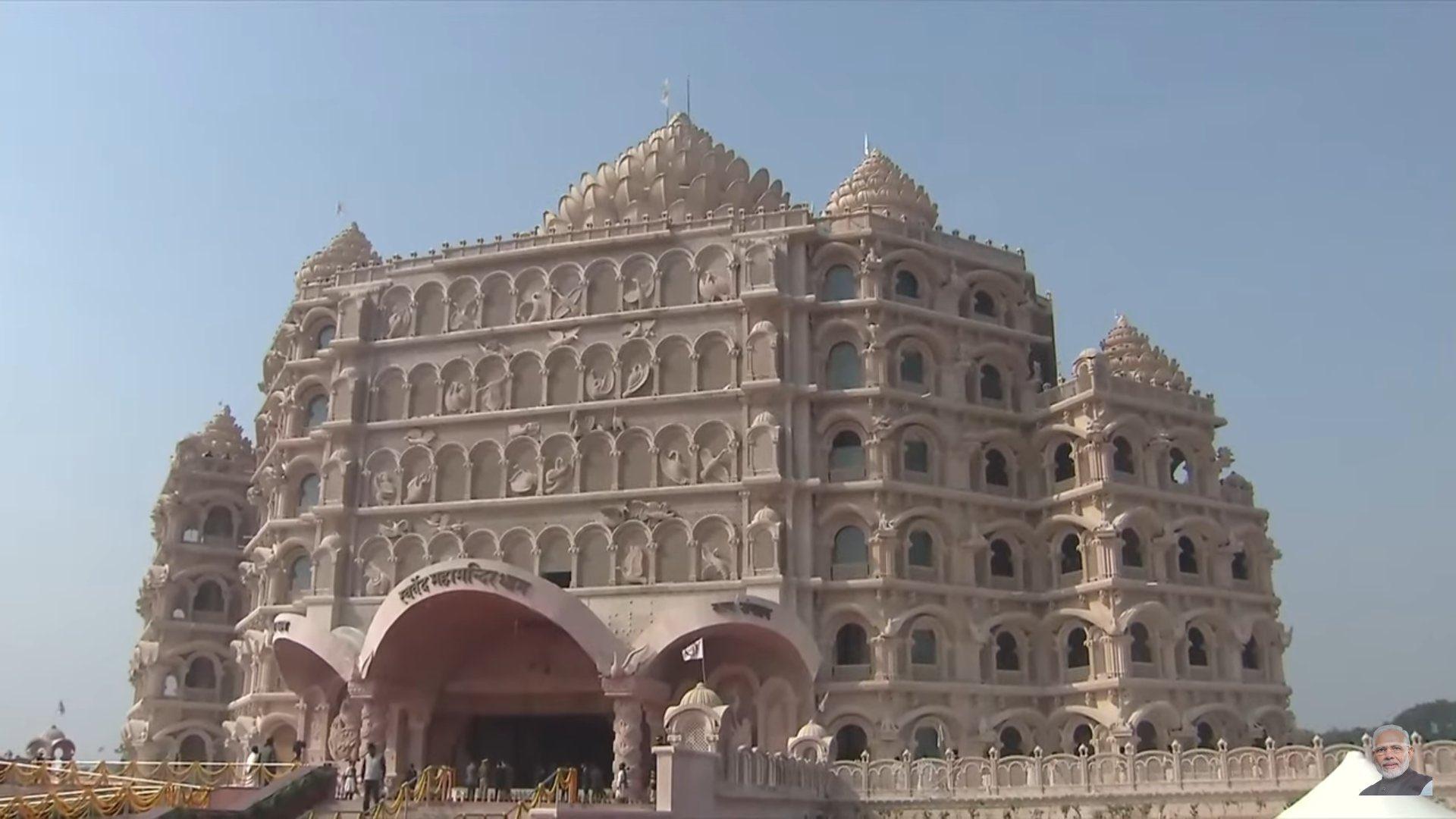
Prime Minister Narendra Modi marked a historic moment on Monday as he inaugurated the Swarved Mahamandir in Umaraha, Varanasi. This newly constructed meditation center stands tall at seven floors, accommodating an impressive 20,000 devotees at a time for meditation. The inauguration ceremony showcased the Prime Minister’s commitment to fostering spiritual well-being and cultural heritage in the holy city.
Architectural Marvel of Swarved Mahamandir
- The Swarved Mahamandir is a mesmerizing architectural marvel, seamlessly blending traditional and modern design elements.
- Intricate marble carvings adorn its structure, and towering lotus-shaped domes reflect the rich cultural heritage of Varanasi.
- The seven-floor superstructure stands as a testament to the city’s spiritual legacy while embracing contemporary aesthetics.

Modi’s Address and the Integration of AI Technology
- During the inauguration, Prime Minister Modi addressed the audience and expressed his optimism about the integration of artificial intelligence (AI) technology.
- In a significant move, he urged attendees from Tamil Nadu to use earphones equipped with AI technology for a translated experience of his speech.
- Modi envisions AI as a tool to facilitate effective communication, allowing him to connect with people across linguistic barriers.
Connecting Tamil Nadu to Kashi
- The Prime Minister emphasized the symbolic significance of individuals from Tamil Nadu visiting Kashi, equating it to moving from one home of Mahadev to his other home.
- Modi highlighted the unique bond between the people of Tamil Nadu and Kashi, emphasizing the warmth and love shared between the two regions.
- He expressed confidence in the people of Kashi leaving no stone unturned in serving their guests.
Top 9 Highlights of Swarved Mahamandir
1. Capacity for 20,000 Devotees
Following the inauguration, Prime Minister Modi, along with Uttar Pradesh Chief Minister Yogi Adityanath, toured the meditation center that boasts a capacity to seat 20,000 people simultaneously for meditation.
2. Verses of Swarveda Adorn the Walls
The seven-floor superstructure features verses from the Swarveda, intricately carved upon its walls. This spiritual text adds an extra layer of sanctity to the already awe-inspiring Mahamandir.
3. Nodal Agency and Ministries Involved
The Union Ministry of Education takes the lead in organizing the event, with participation from various ministries such as culture, tourism, railways, textiles, food processing, MSME, information and broadcasting, skill development, entrepreneurship, and IRCTC.
4. Kashi Tamil Sangamam
The event includes the Kashi Tamil Sangamam, covering lectures on literature, ancient texts, philosophy, spirituality, music, dance, drama, yoga, and Ayurveda. Seminars on innovation, trade, knowledge exchange, edutech, and next-gen technology are also part of the agenda.
5. Named After Swarved
The temple derives its name from the Swarved, a spiritual text authored by Sadguru Shri Sadafal Deoji Maharaj, the eternal yogi, and founder of Vihangam Yoga.
6. Illuminating Humankind with Spiritual Aura
Swarved Mahamandir aims to illuminate humankind with its magnificent spiritual aura, enveloping the world in a state of peaceful alertness.
7. Emphasis on Brahm Vidya
The temple promotes the teachings of Swarveda, placing a special emphasis on Brahm Vidya—a body of knowledge empowering spiritual seekers to maintain a state of consummate Zen, characterized by unwavering constancy in peace and happiness.
8. Principles of Swarveda
Advocating the principles of Swarveda, the temple encourages spiritual seekers to attain a state of complete tranquility, marked by steadfast peace and happiness.
9. Adorned with Pink Sandstone
The walls of Swarved Mahamandir are adorned with pink sandstone, enhancing the grandeur of the structure. Additionally, a beautiful garden featuring medicinal herbs adds to the overall aesthetic appeal.
Swarved Mahamandir: Bridging Spirituality, Culture, and Technology in Varanasi
- The inauguration of Swarved Mahamandir signifies a monumental step towards promoting spirituality, cultural richness, and the integration of modern technology in Varanasi.
- The center stands as a beacon of tranquility, inviting devotees to experience the serenity within its magnificent walls.
Questions Related to Exams
Q1. Who authored the spiritual text Swarveda, after which the temple is named?
A: Sadguru Shri Sadafal Deoji Maharaj, the founder of Vihangam Yoga.
Q2. What special feature distinguishes the Mahamandir’s architecture?
A: The Mahamandir features intricate marble carvings and lotus-shaped domes.
Q3. What principles does the temple advocate, with a focus on Brahm Vidya?
A: Swarved Mahamandir promotes the teachings of Swarveda, emphasizing Brahm Vidya for spiritual seekers.
Sunday, 17 December 2023
UK Government Considers Social Media Limits For Under-16s
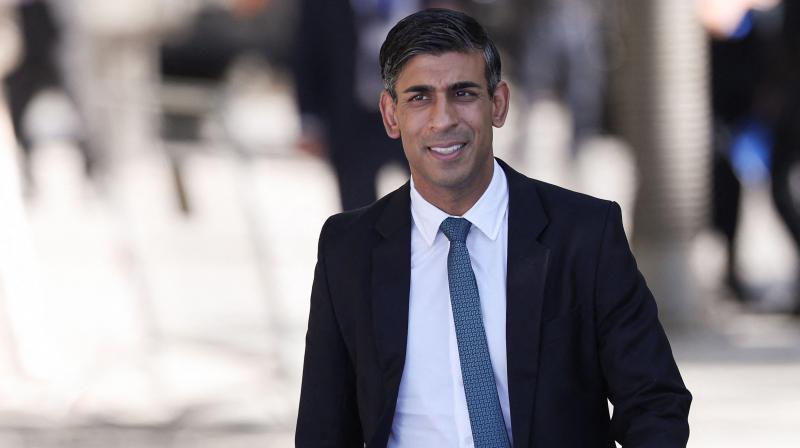
The digital age has ushered in unprecedented connectivity but also raised concerns about the potential harm children may face on social media platforms. The UK government, led by Prime Minister Rishi Sunak, is contemplating additional measures to protect teenagers below the age of 16 from online dangers, despite the recent implementation of the Online Safety Act.
The Online Safety Act and its Limitations
The Online Safety Act, a landmark legislation mandating social media platforms to shield minors from harmful content or face substantial fines, marked a significant step toward ensuring online safety for children. However, reports suggest that the government is exploring further restrictions, prompting concerns and discussions within the public sphere.
Consultation on Social Media Risks for Children
In the coming year, the government plans to initiate a consultation to investigate the risks faced by children using social media. While there are speculations about potential bans for those under 16, a government spokesperson downplayed such claims. The emphasis, according to official statements, is on empowering parents to navigate their children’s online experiences rather than imposing strict regulations.
The Molly Rose Foundation’s Perspective
The tragic case of Molly Russell, a 14-year-old who took her own life after encountering harmful content on Instagram and Pinterest, has played a pivotal role in shaping discussions around online safety. The foundation established in her memory, The Molly Rose Foundation, advocates for enhancing the powers of the communications watchdog, Ofcom, in any regulatory review.
Beeban Kidron’s Concerns and Advocacy
Beeban Kidron, a prominent advocate for children’s online safety, expressed concerns about potentially excluding children from digital spaces. Instead, Kidron emphasizes the importance of designing platforms that actively support the well-being of young users. Kidron’s perspective underscores a nuanced approach that prioritizes fostering positive digital environments for children.
Government’s Broad Examination and Public Response
While the prime minister’s spokesperson did not provide specific details on the proposed measures, the government is broadly examining the issue of ensuring online safety for children. Charities and campaigners, who have advocated for robust online safety regulations since 2017, welcomed the passage of the Online Safety Act but continue to emphasize the need for comprehensive measures.
Important Questions Related to Exams
Q: What is the primary motivation behind the UK government’s contemplation of social media restrictions for teenagers under 16?
Answer: The government aims to safeguard teenagers from online harm and enhance their protection, considering potential risks associated with social media use.
Q: What tragic incident prompted the establishment of The Molly Rose Foundation, and what is its advocacy focus?
Answer: The foundation was established in memory of Molly Russell, who took her own life at 14 after encountering harmful content on Instagram and Pinterest. The foundation advocates for enhancing Ofcom’s powers in any regulatory review to protect children online.
Thursday, 14 December 2023
Telangana Introduces Free Bus Travel For Women And Transgender Individuals
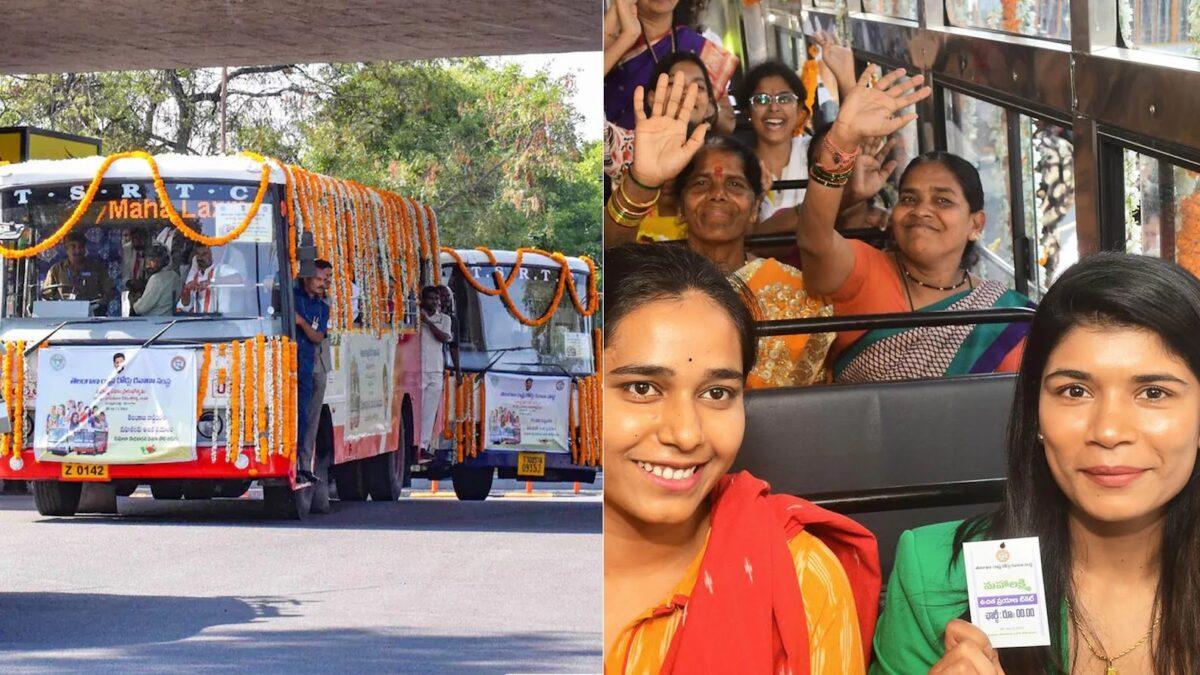
The government of Telangana, under the leadership of Chief Minister Revanth Reddy, has recently launched the ‘Maha Lakshmi Scheme.’ This initiative, announced by the Congress party in its Manifesto for Telangana, aims to provide free travel for women, girls, and transgender persons within the state. The scheme, effective from December 9, 2023, encompasses various guarantees to ensure accessible and affordable transportation for the targeted beneficiaries.
Approval of Promised Guarantees
After taking the oath as the new Telangana Chief Minister, Revanth Reddy promptly approved all six guarantees promised by the Congress party in Telangana. Among these guarantees, the ‘Maha Lakshmi Scheme’ holds a significant position, marking a commitment to empowering women and marginalized communities through free bus travel.
Details of the ‘Maha Lakshmi’ Scheme
1.Scope of the Scheme
The ‘Maha Lakshmi Scheme’ primarily focuses on providing free travel for girls, women of all age groups, and transgender persons in state-run Palle Velugu and express buses operated by the Telangana State Road Transport Corporation (TSRTC) within the borders of Telangana State.
2.Effective Date
The scheme officially commenced on December 9, 2023, with the goal of enhancing mobility and accessibility for the targeted demographic.
3.Beneficiaries
Specifically designed for the benefit of girls, women of all age groups, and transgender persons domiciled in Telangana, the scheme opens avenues for cost-free travel within the state.
4.Inter-State Travel Provisions
Beneficiaries can travel free of charge in inter-state Express and Palle Velugu buses up to the borders of Telangana State.
5.Reimbursement Mechanism
The government of Telangana will reimburse TSRTC for chargeable fares that would have been collected based on the actual distance traveled by women passengers.
6.Implementation Responsibilities
The Vice Chairman and Managing Director of TSRTC have been entrusted with taking further necessary actions and issuing detailed instructions for the effective implementation of the ‘Maha Lakshmi’ scheme.
7.Future Developments
Plans are underway to develop a software-based “Maha Lakshmi” smart card. This initiative aims to provide a seamless and efficient mode of availing the benefits of the scheme, ensuring a user-friendly experience for the beneficiaries.
The Maha Lakshmi Scheme’s Impact on Inclusivity
The ‘Maha Lakshmi Scheme’ in Telangana underscores a dedication to women’s empowerment and inclusivity, offering free travel for women, girls, and transgender individuals. With the goal of improving mobility and accessibility in public transportation, the scheme is poised to positively impact beneficiaries’ lives, fostering social and economic inclusion in the state.
Wednesday, 13 December 2023
India Launches Forest Certification Scheme for Sustainable Management: Key Highlights

The Ministry of Environment, Forests and Climate Change has introduced the Indian Forest & Wood Certification Scheme. This voluntary national certification initiative aims to encourage sustainable forest management and agroforestry practices in India. The scheme encompasses forest management certification, tree outside forest management certification, and chain of custody certification.
Components of the Certification Scheme:
Forest Management Certification
- Based on the Indian Forest Management Standard, aligned with the National Working Plan Code 2023.
- Includes 8 criteria, 69 indicators, and 254 verifiers to ensure responsible forest management.
Tree Outside Forest Management Certification
- Focuses on agroforestry practices, promoting sustainable management beyond traditional forest areas.
Chain of Custody Certification
- Ensures that wood and wood-based products in the supply chain adhere to sustainable practices from source to consumer.
Market Incentives
- Entities embracing responsible forest management and agroforestry practices, such as state forest departments, farmers, and wood-based industries, can benefit from market incentives.
Scheme Oversight
- The Indian Forest and Wood Certification Council will oversee the scheme, acting as a multistakeholder advisory body.
- Representation from institutions like Indian Council of Forestry Research and Education, Forest Survey of India, Quality Council of India, and more.
Operating Agency
The Indian Institute of Forest Management, Bhopal, will serve as the scheme’s operating agency, managing its overall implementation.
Certification Bodies
- The National Accreditation Board for Certification Bodies under the Quality Council of India will accredit certification bodies.
- These bodies will conduct independent audits to assess adherence to prescribed standards.
Stakeholder Representation
- The Council includes representatives from ministries, state forest departments, Forest Development Corporations, and wood-based industries.
Role of Indian Institute of Forest Management
The institute will play a pivotal role in managing and implementing the certification scheme.
Objective and Impact
- Promotes sustainable forest management and agroforestry.
- Encourages responsible practices throughout the wood supply chain.
- Enhances market value for entities adhering to certification standards.
Monday, 11 December 2023
Veteran Kannada Actor Leelavathi Passes Away at 86

In a poignant moment for fans and the film fraternity, the revered Kannada actor Leelavathi has passed away at the age of 86. The seasoned artist, known for her versatile performances, left an indelible mark on the Kannada, Malayalam, Tamil, and Telugu film industries.
Leelavathi, with a career spanning over 600 films, embarked on her cinematic journey with her debut in “Bhakta Prahlada” in 1958. Stepping into the Kannada film industry as a leading lady in “Mangalya Yoga” the same year, she quickly established herself as a prominent figure.
Noteworthy Collaborations and Blockbusters
Her breakthrough came with “Ranadheera Kanteerava,” a historical film featuring the iconic Dr. Rajkumar in the lead role. This marked the beginning of a remarkable on-screen partnership, leading to the duo starring in blockbuster hits such as “Gaali Gopura,” “Kulavadhu,” “Veera Kesari,” and “Bhagya Devathe,” among others. Leelavathi’s versatility shone through as she effortlessly navigated diverse genres, from family dramas to historical epics.
Prolific Career and Recognition
Entering the film industry in the early 1960s, Leelavathi remained a sought-after actor until the late 1980s. Her impressive filmography boasts around 400 Kannada films, showcasing her prowess in family dramas, historical sagas, and social narratives. In 2000, the Karnataka government honored her with the prestigious Dr. Rajkumar Lifetime Achievement Award, a testament to her enduring contribution to Indian cinema.
The news of Leelavathi’s passing resonated across the South Indian film industry, drawing heartfelt condolences from leaders and luminaries. Political figures, along with actors and filmmakers, united in expressing their grief at the loss of a cinematic legend.
As the curtain falls on Leelavathi’s illustrious career, her legacy endures through the countless moments of joy and emotion she brought to audiences. The Indian film industry mourns the departure of a stalwart, remembering Leelavathi not just as an actor but as a cultural icon whose impact transcended screens.
Mohan Yadav is the newly elected Chief Minister of Madhya Pradesh

Who is the Madhya Pradesh New Chief Minister?
The Bharatiya Janata Party (BJP) has officially announced Mohan Yadav as the chief minister-elect for Madhya Pradesh, solidifying its victory in the November 17 polls. The decision came after BJP observers held discussions with the newly elected MLAs in the state.
Profile of Mohan Yadav:
Mohan Yadav, an MLA from Ujjain South, has been chosen to lead Madhya Pradesh. With prior experience as a minister in the Shivraj Singh Chouhan cabinet, Yadav represents the Ujjain Dakshin constituency in Ujjain district in the Madhya Pradesh Legislative Assembly.
Election Results:
The BJP successfully retained power in Madhya Pradesh, securing 163 seats out of the 230-member assembly. This resounding victory left the Congress trailing far behind with only 66 seats.
Deputy Chief Ministers Appointed:
In a strategic move, the BJP appointed Rajendra Shukla and Jagdish Devda as deputy chief ministers for Madhya Pradesh. Rajendra Shukla, hailing from the Rewa constituency, and Jagdish Devda, representing Mandsaur, bring diverse perspectives and experiences to support Chief Minister Mohan Yadav in his leadership. Rajendra Shukla and Jagdish Devda will play crucial roles in shaping the state’s policies and governance. Their appointments signify the BJP’s commitment to inclusive and collaborative governance in Madhya Pradesh.
Narendra Tomar Elected as Assembly Speaker:
Adding another significant development, Narendra Tomar has been elected as the Madhya Pradesh Assembly Speaker. His role as Speaker will be instrumental in maintaining parliamentary decorum and facilitating smooth legislative proceedings.
Important takeaways for all competitive exams:
- Madhya Pradesh Capital: Bhopal (Executive Branch);
- Madhya Pradesh Bird: Indian paradise flycatcher;
- Madhya Pradesh Flower: White lily;
- Madhya Pradesh High Court: Madhya Pradesh High Court;
- Madhya Pradesh Governor: Mangubhai C. Patel.
Monday, 4 December 2023
India’s President Presents National Awards 2023 for the Empowerment of Persons with Disabilities
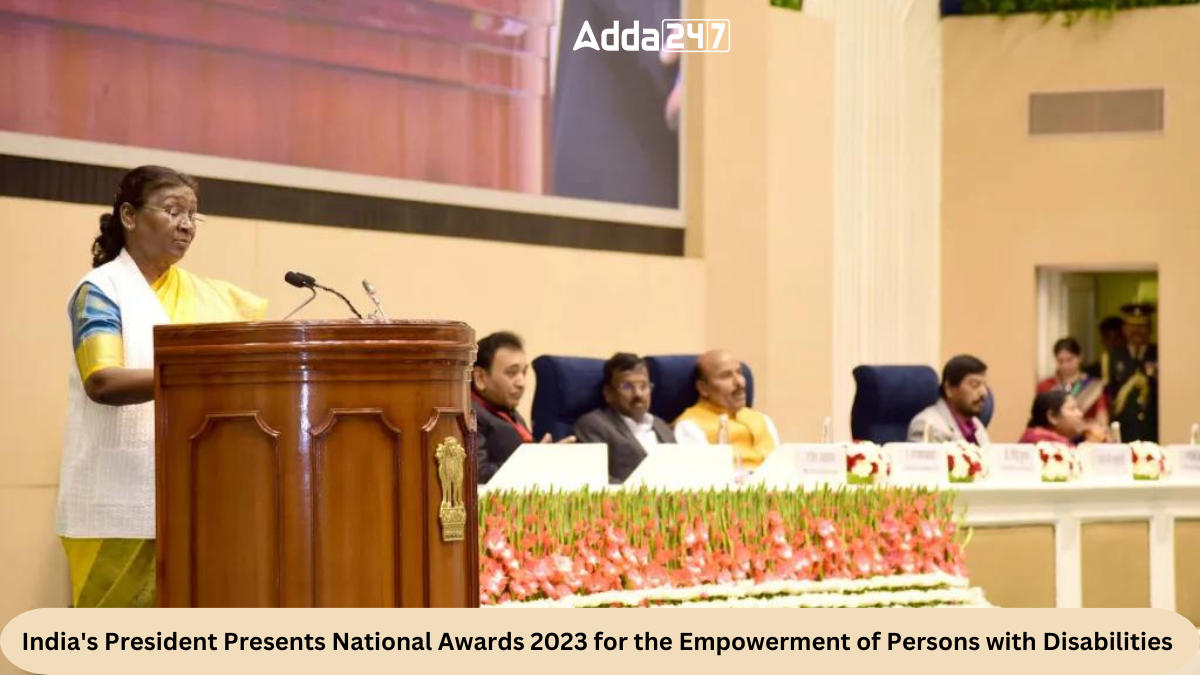
The International Day of Persons with Disabilities witnessed a grand ceremony in New Delhi as President Droupadi Murmu bestowed the National Awards for the Empowerment of Divyangjan 2023 upon 21 individuals and 9 institutions. Recognizing exemplary contributions across various fields, the awards underscored the government’s commitment to prioritizing the empowerment of Divyangjan, constituting 15% of the global population.
Inclusive Parliament Building
President Smt. Murmu declared the new parliament building as accessible, marking it as a symbol of inclusivity and empathy. This announcement reflects the government’s dedication to creating an environment that accommodates Divyangjan, emphasizing the importance of both physical and digital access. The move aligns with the Sustainable Development Goals 2030, highlighting the government’s commitment to fostering an inclusive ecosystem.
Honoring Exceptional Contributions
On this prestigious occasion, 30 outstanding individuals, institutions, organizations, states and districts were honored for their remarkable achievements and contributions to the empowerment of Divyangjan. The awards spanned various fields, recognizing the diverse talents and efforts that contribute to the holistic development of the disabled community.
Women Empowerment
President Murmu applauded the remarkable progress among all players affected by disabilities, with a special mention of women. Deepa Mallick and Sheetal Devi were acknowledged for their exceptional achievements. Sheetal Devi, at just 16, secured three medals, including two gold, at this year’s Asian Paralympic Games, showcasing the incredible potential of women with disabilities.
Government Initiatives
Dr. Virendra Kumar, the Union Minister of Social Justice and Empowerment, addressed the gathering and reaffirmed Divyangjan as an essential human resource. He highlighted the issuance of over one crore Unique Disability Identity cards to enhance accessibility to government schemes. Emphasizing equal opportunities, Dr. Kumar cited a four percent reservation in employment and showcased key initiatives like the Indian Sign Language Institute and the Divyangjan Sports Training Center, contributing significantly to the holistic development of Divyangjan.
Application and Selection Process
In 2023, applications and nominations for the National Awards were invited through the centralized portal of the Ministry of Home Affairs (www.awards.gov.in). The portal, open from June 15 to August 15, received a staggering 1874 applications. Screening Committees meticulously shortlisted candidates and the National Selection Committee, in its meeting on November 16, recommended 30 awardees for 2023.
Important Questions Related to Exams
Q1. How many individuals and institutions received the National Awards for the Empowerment of Divyangjan in 2023?
Sol. 21 individuals and 9 institutions were honored.
Q2. What did President Droupadi Murmu declare about the new parliament building?
Sol. President Droupadi Murmu declared it accessible, symbolizing inclusivity and empathy.
Q3. How many awardees were recognized for their exceptional contributions to the empowerment of Divyangjan?
Sol. 30 outstanding individuals, institutions, organizations, states and districts.
Sunday, 3 December 2023
ISRO Unveils XPoSat: India’s Pioneering X-Ray Polarimeter Satellite

The Indian Space Research Organization (ISRO) has recently announced its ambitious plan to launch the country’s first X-Ray Polarimeter Satellite (XPoSat). This groundbreaking mission aims to delve into the polarization of intense X-Ray sources, introducing a novel dimension to X-Ray astronomy. With a focus on simultaneous studies of temporal, spectral and polarization features, XoPoSat is poised to make significant contributions to our understanding of cosmic X-Ray sources.
Mission Overview
The XPoSat spacecraft is designed for observation from Low Earth Orbit, with a non-sun synchronous orbit of approximately 650 km altitude and a low inclination of around six degrees. The mission boasts two scientific payloads, allowing for comprehensive studies of bright X-Ray sources. The spacecraft is expected to have a mission life of approximately five years, during which it will carry out observations during the eclipse period, when the spacecraft transits through Earth’s shadow.
Primary Payload – POLIX
The primary payload of XPoSat is the Polarimeter Instrument in X-Rays (POLIX), developed by the Raman Research Institute (RRI), Bengaluru, with support from various ISRO centers. POLIX is designed to measure polarimetry parameters, specifically the degree and angle of polarization, in the medium X-ray energy range of 8-30 keV photons originating from astronomical sources. This instrument is a crucial component in enabling detailed studies of X-Ray polarization, a feature not extensively explored in previous Indian space-based X-Ray astronomy missions.
Secondary Payload – XSPECT
The secondary payload, X-ray Spectroscopy and Timing (XSPECT), was developed by the U.R. Rao Satellite Centre (URSC), ISRO, XSPECT provides spectroscopic information within the energy range of 0.8-15 keV. This payload enhances the capabilities of XPoSat by enabling researchers to gather valuable data on the spectral characteristics of cosmic X-Ray sources. The combination of POLIX and XSPECT allows for a comprehensive analysis of X-Ray astronomy capabilities.
Mission Objectives
The primary objectives of the XPoSat mission include the measurement of X-Ray polarization in the energy band of 8-30 keV emanated from X-Ray sources. Additionally, the mission aims to conduct long-term spectral and temporal studies of objectives, XPoSat is poised to contribute crucial insights into the behavior and properties of X-Ray sources in the cosmos.
Launch Details
The XPoSat mission will be launched by the Polar Satellite Launch Vehicle (PSLV) from the Satish Dhawan Space Center in Sriharikota. This launch vehicle has a proven track record of reliability, making it an ideal choice for deploying scientific payloads into orbit.
Important Questions Related to Exams
Q1. What is ISRO’s recent ambitious plan in space exploration?
Sol. ISRO plans to launch India’s first X-Ray Polarimeter Satellite (XPoSat) for groundbreaking studies in X-Ray astronomy.
Q2. What is the primary focus of XPoSat’s mission?
Sol. XPoSat aims to study the polarization of intense X-Ray sources, introducing a new dimension to X-Ray astronomy with simultaneous examination of temporal, spectral and polarization features.
Q3. Where is XPoSat designed to observe from and what is its orbit altitude?
Sol. XPoSat is designed for observation from Low Earth Orbit at an altitude of approximately 650 km.
“New Arrivals on the Shelves!”
📢 ANNOUNCEMENT Library & Information Centre Date: 09/24/2025 To All Students & Faculty, We are pleased to announce that syllabus-o...

-
📢 ANNOUNCEMENT Library & Information Centre Date: 09/24/2025 To All Students & Faculty, We are pleased to announce that syllabus-o...
-
The Nobel Prize winners in 2023 represent a diverse range of fields and disciplines, but they are all united by their extraordinary con...

